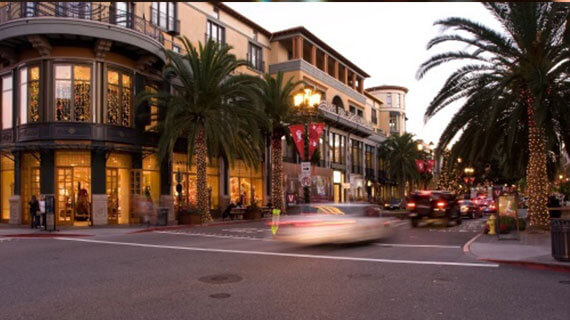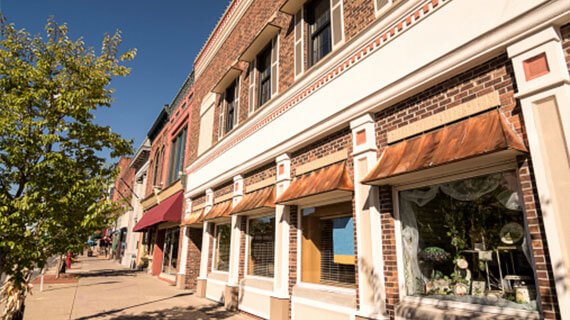Visual Merchandising: Investigate Trading Area
Store Location
Store location is an essential element of the store’s brand image and impacts other image elements such as the store’s external environment, including landscaping and parking areas; the store’s architecture, both exterior and interior décor; and the store’s promotional mix, especially the visual merchandise presentation and display techniques. Additionally, store location is a critical consideration when the retailer identifies its target consumer segment and establishes its merchandising policies and marketing mix.
Pedestrian & Vehicular Traffic
If a store has pinpointed its target consumer, it is most important that the store location is compatible with geographical areas where that consumer shops. The number of consumers and the specific target segments shopping in the location are critical to a successful retail operation. When assessing the pedestrian or foot traffic at a specific retail location, the consumer’s age, gender, occupation and income level, as well as intention to buy, are criteria that must be analyzed. Also, the day of the week and the time of the day that these consumers visit the shopping area should be investigated.
Transportation & Parking Facilities
Retail stores frequented mainly by vehicular traffic should be in geographic locations where there are major highways or arteries easily accessible, where traffic patterns or roads are safe to travel, and where adequate mass transit such as buses, taxis, bike paths, or other modes of transportation exists. For example, if a shopper must make a left turn without a traffic light in a busy intersection, that consumer may avoid that particular shopping location.
Tenant Mix
The tenant mix of a shopping center or the number and types of retailers located within a specific center must be a “fit” with the location and target consumer. Since many consumers come to a mall or shopping center for one-stop shopping, they desire stores that are compatible, complementary, and provide a variety of goods for comparison shopping as well as an adequate availability of various product classifications.
Specific Site Visibility & Surrounding Environment
The site visibility or possibility that the consumer may immediately see the storefront and/or signage of a specific store from the access road and/or the parking lot is very important in building store traffic. The consumer’s initial introduction to a store establishes first impressions. Sometimes those impressions are most difficult to change in the mind of the consumer. Also, the first visible image characteristics that the consumer sees or the appearance of the storefront and signage are cues that will entice the consumer to enter or not enter the store.
Placement of Store within Specific Site
The placement or location of the store within the shopping center or mall is also an important consideration for the retailer. Further, the placement impacts the job responsibilities of the visual merchandiser. An ideal location for a retailer is a corner space since there are at least two access venues for the consumer. Also, there is usually more window display space since the store is visible from two sides of the building. Therefore, more pedestrian traffic and vehicular traffic should be anticipated for the corner store.
Terms of Occupancy
Retailers or store groups with multiple stores usually lease buildings for their retail stores instead of owning real estate. Small stores or regional groups may build their own buildings to specifications and control all aspects of the physical building. There are pros and cons for both types of occupancy, depending on the geographical region of the country, the store type and number of stores, and the liquidity of the assets of the retailer.
Promotional Activities
As previously discussed, most large shopping centers or mall complexes maintain a marketing department that promotes the mall itself or an event within the mall. At other times, the marketing department may feature happenings, promotions, and special events for select stores in the mall. For example, these marketing endeavors may include television advertisements announcing a seasonal holiday event such as the Easter Bunny being available for pictures with the children at the mall or Santa arriving at the mall.
Economic Bases
Within a trading area, the economic base is an indicator of the target consumer’s income. Therefore, economic statistics such as unemployment rate, interest rates, types and numbers of industry available for employment, educational level of consumers, and median household income as well as buying income, building permits, and tax rates are tracked continually by the retailer. These factors determine the amount of discretionary income available for the purchase of products other than those needed for necessity items.
Housing Patterns
The average value of a house in a geographic area, the types of housing available, and the locations of those houses are very important factors for retailers to consider when selecting a store location. Do the nearby residential areas have more single-family dwellings or more apartments, condos, or townhouses? What are the interest rates on home mortgages? What are the county and city tax rates? And, what are the income levels of residents in the area?












